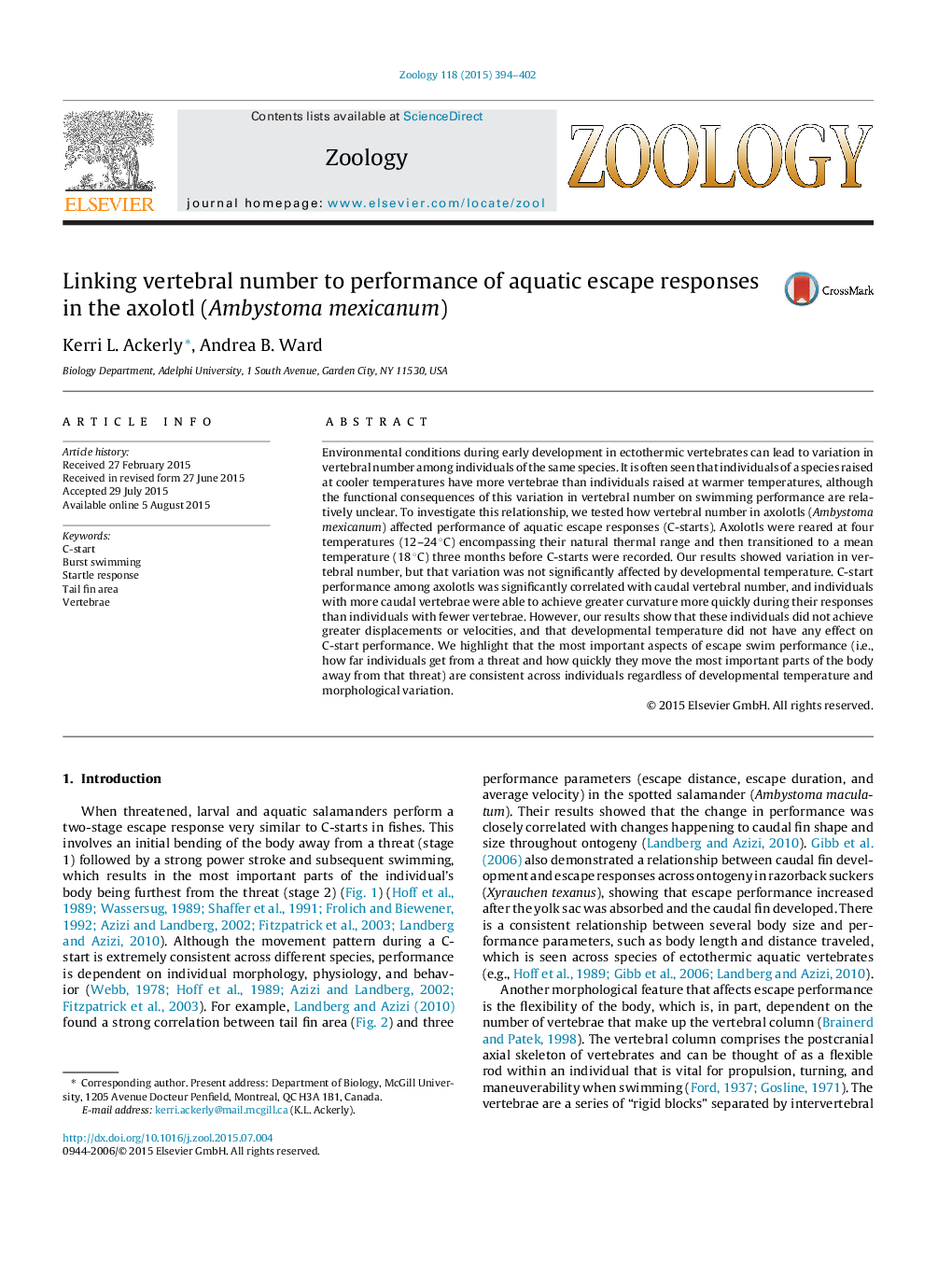| کد مقاله | کد نشریه | سال انتشار | مقاله انگلیسی | نسخه تمام متن |
|---|---|---|---|---|
| 2791030 | 1154833 | 2015 | 9 صفحه PDF | دانلود رایگان |

• We investigated the functional consequences of vertebral variation on escape swimming performance among axolotls reared at various temperatures.
• Individuals with more caudal vertebrae were able to achieve greater curvature more quickly during their escape responses.
• Vertebral number and developmental temperature did not have significant effects on an individual’s velocity or displacement.
Environmental conditions during early development in ectothermic vertebrates can lead to variation in vertebral number among individuals of the same species. It is often seen that individuals of a species raised at cooler temperatures have more vertebrae than individuals raised at warmer temperatures, although the functional consequences of this variation in vertebral number on swimming performance are relatively unclear. To investigate this relationship, we tested how vertebral number in axolotls (Ambystoma mexicanum) affected performance of aquatic escape responses (C-starts). Axolotls were reared at four temperatures (12–24 °C) encompassing their natural thermal range and then transitioned to a mean temperature (18 °C) three months before C-starts were recorded. Our results showed variation in vertebral number, but that variation was not significantly affected by developmental temperature. C-start performance among axolotls was significantly correlated with caudal vertebral number, and individuals with more caudal vertebrae were able to achieve greater curvature more quickly during their responses than individuals with fewer vertebrae. However, our results show that these individuals did not achieve greater displacements or velocities, and that developmental temperature did not have any effect on C-start performance. We highlight that the most important aspects of escape swim performance (i.e., how far individuals get from a threat and how quickly they move the most important parts of the body away from that threat) are consistent across individuals regardless of developmental temperature and morphological variation.
Journal: Zoology - Volume 118, Issue 6, December 2015, Pages 394–402